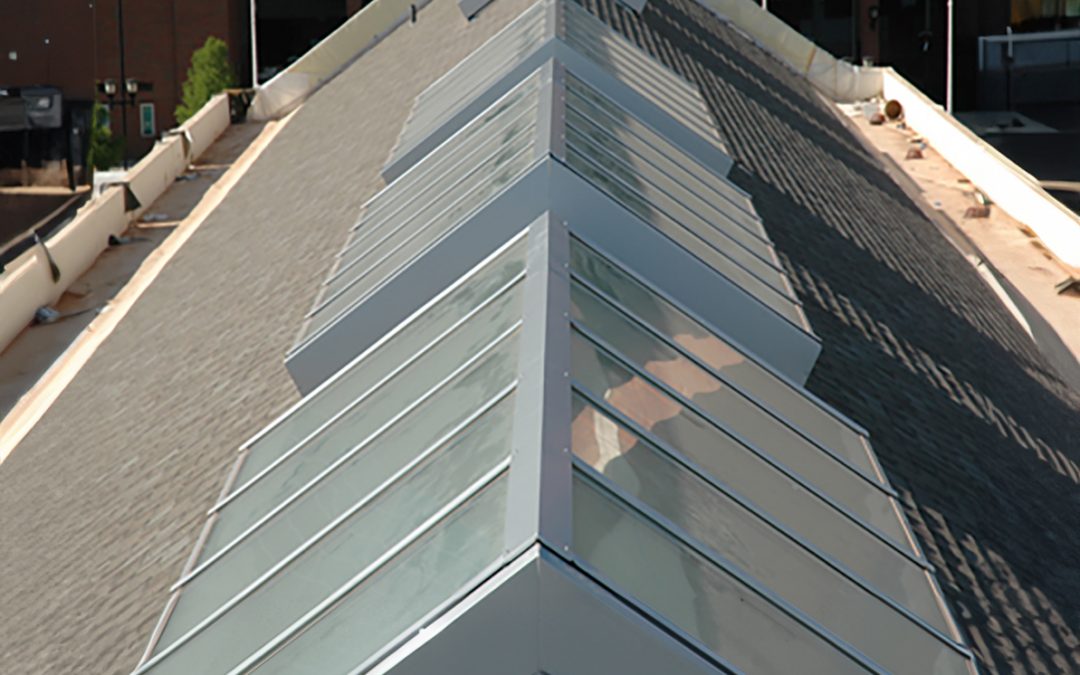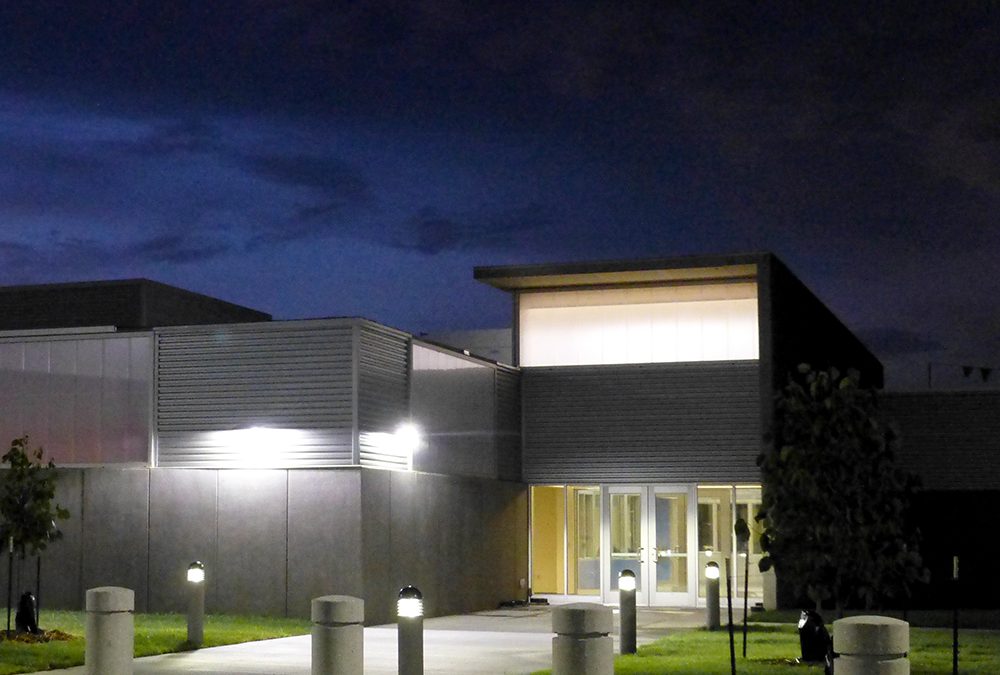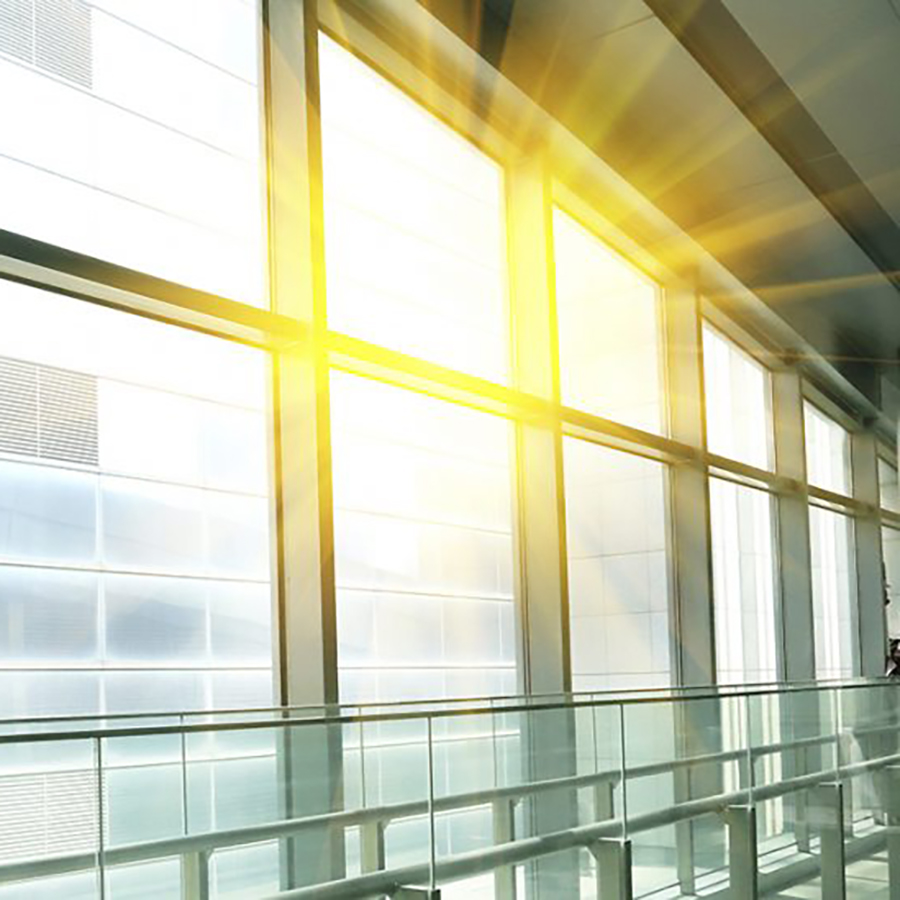Good daylighting gone bad

The quality of light has nothing to do with the quantity of light available. It’s more about the perception of brightness.
Too much of a good thing is, well too much! The same goes for sunlight. When it comes to using natural light in the workspace it’s easy to go overboard which causes an entirely different set of problems.
Have you heard your students or co-workers make any of the following statements:
- This room is gloomy
- Wow, the light is really reflecting on my computer screen.
- Why do we have the lights on when there’s already so much light?
- My curtains are fading from the sunlight on them every day
- I wish I could control the blinds or open a window
- The sunlight is really dazzling
If you’ve heard these comments, chances are the light in your space needs to be redirected, diffused, or automated.
Everyone experiences lighting, especially natural lighting, differently. What may be at a comfortable level to one person, may cause issues for another. It’s a matter of perception. But daylight can be managed in such a way that the majority of people can work in comfort. Remember, the quality of light has nothing to do with the quantity of light available. It’s more about the perception of brightness.
Glare is a common complaint of daylighting gone bad. All light is reflective. The light bounces off of lighter-colored walls and mirrors. It also reflects off of surfaces like glossy desktops and computers. To have efficient lighting you’ll want to take into account where the light is directed through the windows at all times of the day. Overhead lights that are never turned on (or have bulbs removed) are signs that the lighting isn’t optimal for the full work day.
Don’t be tempted to just rearrange the furniture to combat the glare. Lighting from stationary fixtures is placed to give optimal performance over workstations and the like. Moving the workstation may result in the light being over a walkway instead of the workspace.
While this article is about how the use of natural light can go overboard, it’s just as likely that there are places that are too dark to work. The lighting from above may be sufficient under certain circumstances when it’s a sunny day for example, but not enough when the sun has dipped behind clouds. When you see personal lamps on desks that’s a sure sign that light levels aren’t high enough for the space.
Both dark spaces and glare cause eye strain and headaches which results in a loss in concentration and productivity. Natural and artificial light that is kept at a comfortable level throughout the day is best.
Even though windows are a great source of natural light, they can also be the source of overlighting problems. And when lighting is poor you’ll hear people saying that they need to get some “fresh air” or daylight.
When you are seeing (or hearing) the signs of a potential lighting issue, it might be wise to measure the amount of light throughout the room at various times of the day. The most commonly used metric for measuring daylight in a building is called the “daylight factor.” Without getting into the calculations, it’s best to have a daylight factor rating of 2% to 5%. You can, of course, learn the calculations, or you can invest in a light meter to measure the daylight. Once you know where the problem areas are, you’ll probably want to invest in some improvements to cut light where it’s too bright and add where there isn’t enough.
If you’re doing it wrong, there are some things that can make lighting better.
- Window tinting in areas that get too much light throughout the day. Tinting can be limited to areas near workstations to better optimize natural lighting.
- Add a coating of frits. These are tiny dots/designs on the glass surfaces that are not diffusers but do cut the amount of direct light while providing an attractive view.
- Add mirror surfaces to window exteriors. While these will reflect light away from the interior, the mirror coating will not eliminate all-natural light, but temper the light available.
- Use clean, bright white ceiling tiles. Light reflects from lighter surfaces and indirect light is more favorable for long-term comfort.
- Add mirrors inside to reflect light into dark places. Since light is reflective, well-positioned mirrors can add visual appeal while directing light where needed.
Remember, people are at their best when lighting is optimal. If you want better students, better workers, and improved personal productivity, get the daylighting right. Everything will fall into place easily when people get the right mix of natural and synthetic light in their environment.
Read these related articles for more information on daylighting:
- Why full spectrum light is best for schools
- Suprising reasons to use daylighting
- Best practices in daylighting
More From This Category

The 4 Types of Ridge Skylights
Four types of ridge skylightsRidge skylights combine aesthetic appeal with functional...

Why Businesses Are Choosing Reglazing for Skylights and Glazed Structures
Rather than entirely replacing skylights or glazed structures, reglazing just the IGUs provides...

Polycarbonate clerestories are shedding new light on energy-efficient daylighting.
Polycarbonate provides translucent brilliance in filtering natural lightA clerestory is an...

